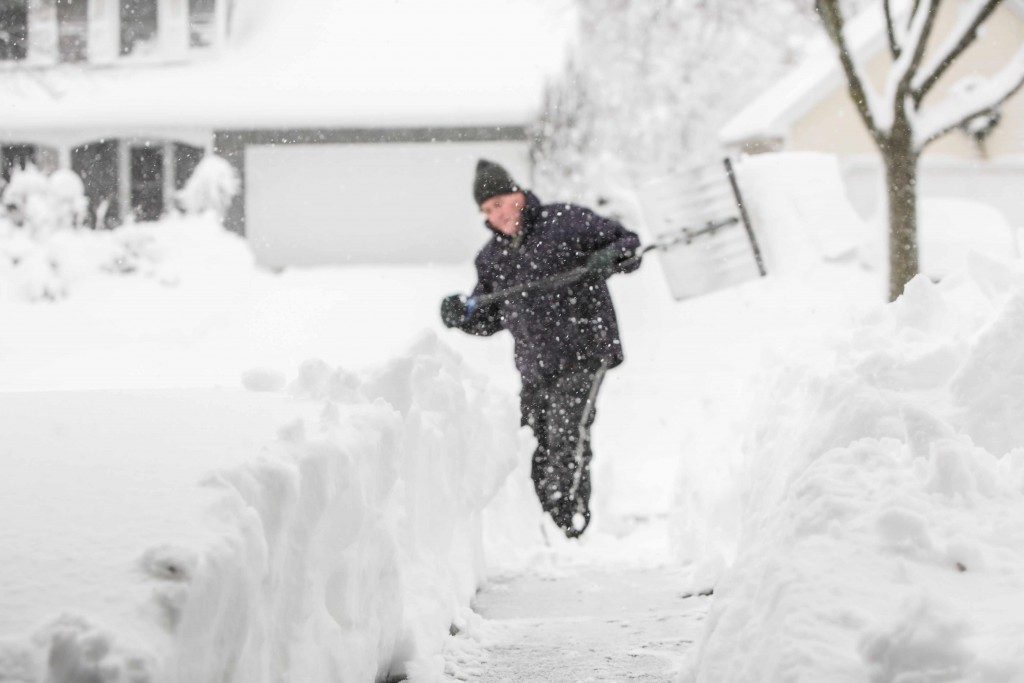-
Mayo Clinic Q & A
Mayo Clinic Q and A: Top tips to avoid back injuries this winter

DEAR MAYO CLINIC: I threw out my back doing yardwork. While I was laid up for a few weeks, I’m OK now. I'm concerned I will reinjure my back shoveling snow this winter. How can I protect my back while shoveling?
ANSWER: Winters in certain parts of the country can be long and snowy. While seemingly an innocuous task, snow shoveling can be a rigorous aerobic activity and one that significantly stresses the back. You should be mindful to avoid serious injuries when shoveling.
Here are a few tips and techniques to hopefully keep your driveway and sidewalk clear while avoiding serious injury:
- Assess your personal fitness and ability.
If you have any preexisting conditions, such as heart disease or lower back conditions, it is critical to consult with your health care provider before the snow starts falling. Often, for those who have long-standing back issues, the best way to avoid injury may be to avoid shoveling altogether by purchasing a snowblower or hiring someone to help. - Warm up and stretch beforehand.
Treat snow shoveling like any other workout. Warm up to get the heart rate up and blood flowing beforehand. Stretches focusing on the lower back and hamstrings also will help prevent overstressing the back during shoveling. - Dress warmly and hydrate ahead of time.
Keeping the body warm during aerobic activity improves blood flow and oxygenation to muscles in the lower back, which reduces stress and overexertion. A good pair of boots or shoes with good traction will help you avoid slips and falls that could cause a back injury. Make sure to hydrate appropriately ahead of time to avoid exhaustion and lower back cramps. - Pick the right time and the right shovel.
Depending on the timing of snowfall, many people tend to shovel early in the morning after waking up. This is not the most optimal for your body, as you are less likely to be warmed up and you'll be more prone to injury.Try to avoid early morning or late-night shoveling as much as possible. If a large amount of snow is predicted to fall, consider taking multiple passes, with frequent breaks, so you are not shoveling large piles of snow. Lay down salt or sand ahead of time to improve traction and prevent ice buildup. Lastly, invest in a good shovel, ideally one that is lightweight, metal and sturdy, and has good grips and a long shaft to help with leverage. - Keep your back straight, use your legs and take frequent breaks.
When shoveling, the rule is to start slow and take frequent breaks, especially early in the season as you're building up your stamina. While you shovel, avoid bending with your back to scoop. Instead bend at the knees and hips. Keep your arms close to your body to avoid overstressing your back.When dumping the snow from the shovel, turn with your entire body versus twisting with your back. Avoid scooping large, heavy loads. Ideally, break up the snow into smaller, more manageable shovel loads. - Treat lower back strain appropriately.
If you strain your lower back by shoveling snow, take some time to rest to give your body time to recover. Over-the-counter medications, such as Tylenol, or nonsteroidal anti-inflammatory medications such as ibuprofen, can help control pain. Topical agents, as well as heat and cold compresses, also can help. Gentle lower back therapy, including stretching and core exercises, can help with the recovery process, as well. - Be aware of red flag symptoms and seek medical care when appropriate.
If you have any severe, progressive or persistent lower back pain, seek medical care urgently. This is especially true if your back symptoms are accompanied by pain radiating down your lower extremities, weakness in your legs or feet, numbness in your genital area, or symptoms of incontinence. Other nonspinal symptoms, such as shortness of breath, chest pain, lightheadedness or palpations, also should warrant urgent medical evaluation.
With proper preparation and mindful attention to the actions you take while shoveling, snow clearing doesn't have to be a tedious or difficult winter task. Should you need additional assistance for injuries, consult with your primary health provider or a spine care center. — Dr. Arjun Sebastian, Orthopedic Surgery, Mayo Clinic, Rochester, Minnesota
****************************
Related Articles
- Mayo Clinic Q and A: How to exercise safely during the winter published 11/30/21
- Mayo Clinic Q and A: Shoulder injuries and winter weather safety tips published 11/26/21
- Winter storm and safe shoveling published 12/29/20







